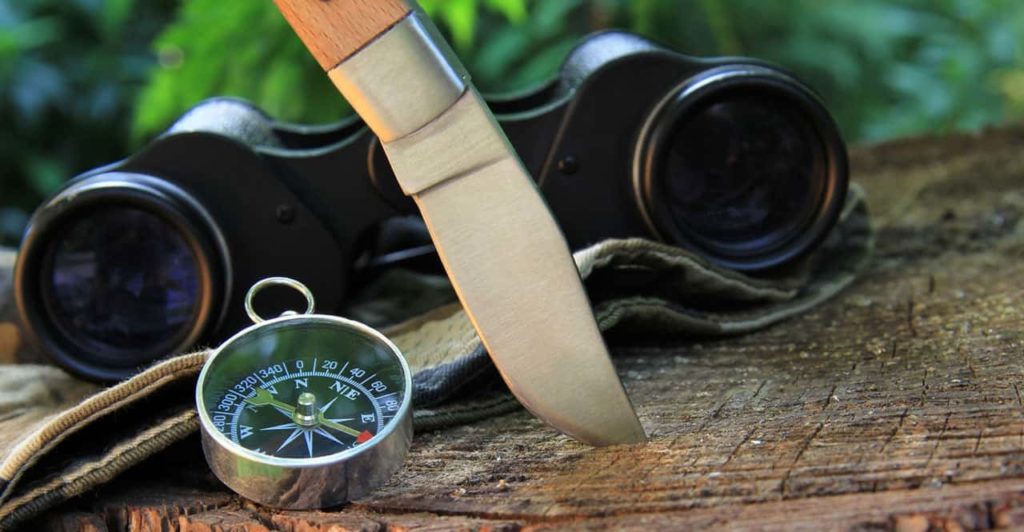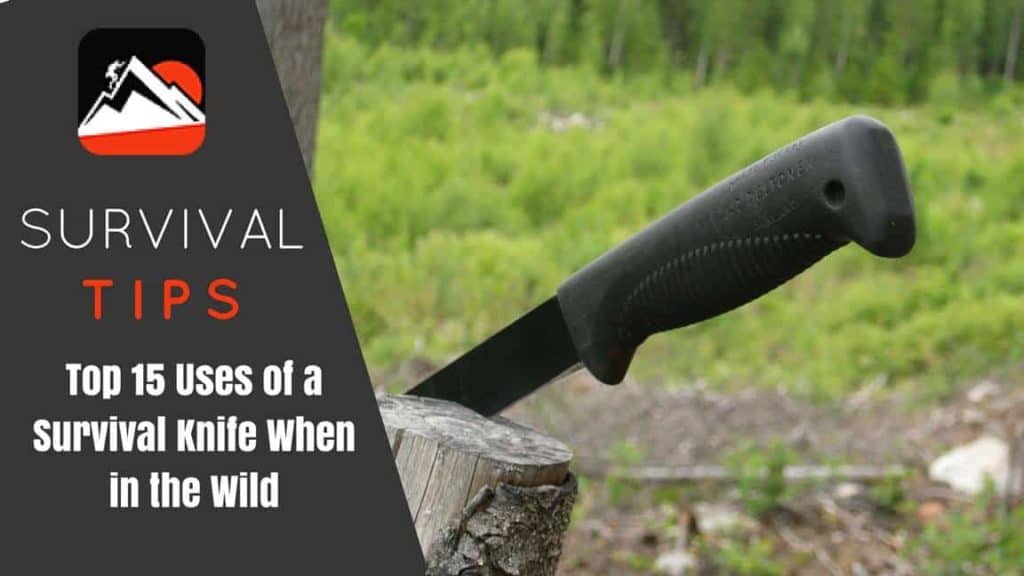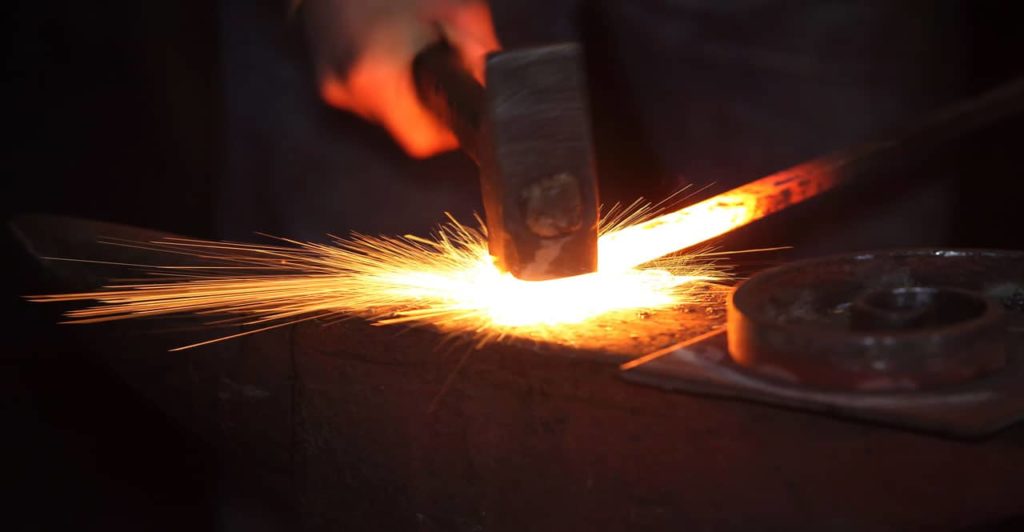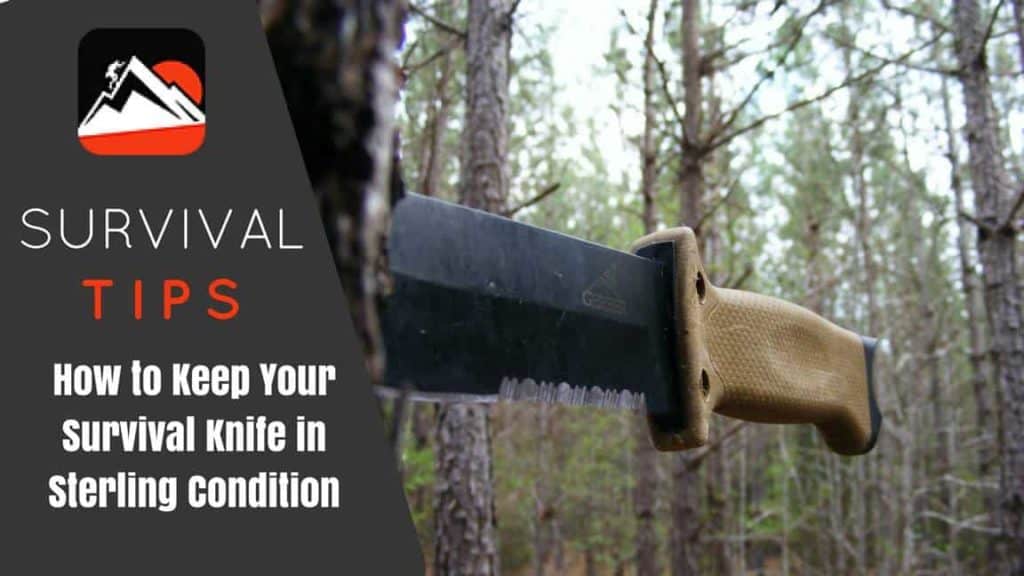Contents
Any experienced survivalist will tell you that in a survival situation, a good knife is Man’s best friend. However, it should also be noted that while any knife in a survival situation is far better than no knife at all, there is simply is no such thing as a single survival knife that is perfect for all of the various tasks a person might have for it in a survival situation. Thus, rather than attempting to choose an all-purpose survival knife, a far better strategy is to choose and carry more than one knife and to choose each knife that you carry for a specific set of tasks. For instance, for chopping saplings and splitting firewood, a large, heavy duty, fixed blade knife with a weight-forward blade design is the best choice. But, for performing smaller, more delicate, cutting tasks such as building traps and snares as well as removing the hides from the animals you trap, a smaller, general purpose, utility knife such as the seven knives listed below is very handy to have along.
FIXED BLADE BUSHCRAFT/SURVIVAL KNIFE BUYER’S GUIDE
When reading my reviews of the seven bushcraft/survival knives listed below, you will see that I have listed several different specifications for each knife that will provide you useful information about each knife. But, unless you are familiar with the various aspects of knife design, then the various specifications may be somewhat confusing to you. However, when it comes to general purpose bushcraft/survival knives, the type of steel that the blade is made from is the single most important factor to be considered because the blade must be tough enough to withstand any job that you may need the knife for. But, along with the type of steel the blade is made from, you should also note the blade’s Rockwell hardness because a blade with a Rockwell Hardness that is too low will not hold an edge well while one with a Rockwell Harness that is too high may be too brittle. In addition, you should note the length of the blade because the blade’s length determines the knife’s suitability for any given bushcraft/survival task. In addition, you should also note the blade design since some blade designs are far better suited as general purpose bushcraft/survival than others. Then, last but not least, you should note the type of cutting edge the knife has because, there again, some designs are far better suited for bushcraft/survival than others. So, below you will find an explanation of each of these aspects of knife design to help you choose the fixed blade knife that best suits you.
- Blade steels – As mentioned above, the type of steel the blade is made from is a critical factor when choosing a bushcraft/survival knife and thus, the first step to choosing an appropriate blade steel is to decide between a stainless steel blade and a high carbon plain tool steel blade because they each have advantages and disadvantages over the other. For instance, because bushcraft/survival knives are often called upon to perform a wide range of tasks, you need a steel that it is both reasonably tough and yet, also holds an edge well. Thus, in this case, high carbon plain tool steels such as SAE 1095 are often a wise choice even though they are far more prone to corrosion than stainless steels are. But, even so, there are some stainless blade steels such as AUS-8 and 440C that are also well suited for making bushcraft survival knives and which will do a far better job of resisting corrosion that than high carbon plain tool steels.
- Rockwell Hardness – While the type of steel a knife blade is made from is the single most important factor to be considered when choosing a bushcraft/survival knife, the steel’s Rockwell Hardness is another important factor that should be considered because it will not only provide you with an indication of how tough the blade is, it will also indicate how well the blade will hold an edge. Consequently, you should be aware that the Rockwell C scale is commonly used to measure the hardness of blade steels and, the higher the Rockwell Hardness is, the better a blade tends to hold an edge. But, at the same time, the more brittle it tends to be. On the other hand, the lower the Rockwell Hardness is, the tougher a blade steel tends to be but, the more easily it will lose its edge. However, because a knife is a person’s best friend in a survival situation, a blade steel that does a good job of withstanding both impact and prying is often a better choice than one that holds an edge well because, while a dull edge can be resharpened, a broken blade is completely useless. Thus, when choosing a bushcraft/survival knife, blade steels with a Rockwell Hardness of 52 HRC to 56 HRC are a good choice.
- Blade Length – In addition, the length of the blade is another factor that you should consider when choosing a bushcraft/survival knife because, while longer blades are a good choice for such tasks as chopping saplings and splitting firewood, they are often too long for more precise cutting tasks such as building traps and snares. Thus, when choosing a bushcraft/survival knife, knives with blades that range from 8 to 10 inches are a good choice for heavy-duty choppers but, knives with blades that range from 4 to 6 inches are a far better choice for general purpose utility knives.
- Blade Design – In addition to the length of the blade, you should also carefully consider the blade design because some blade designs such as the Khukuri are very purpose specific while others such as the Bowie are very general. Thus, when choosing a heavy duty chopper, you should look for a weight forward blade design with a very thick spine but, when choosing a general purpose utility knife, you should look for a well-balanced blade with either a clip point or a drop point blade design.
- Plain vs. Serrated Cutting Edges – Last, when choosing a bushcraft/survival knife, you should note that while blades with serrated edges do a far better job of cutting tough materials, they are not particularly useful on a bushcraft/survival knife because they do not carve or slice as well as a plain edge. In addition, partially serrated edges are very difficult to sharpen and they require a round ceramic sharpener of the same diameter as the serrations in order to keep them sharp.
MY CHOICE FOR THE TOP 7 BUDGET FIXED BLADE KNIVES UNDER 75
Because there are so many different fixed blade knife manufactures in the market today who produce so many different designs, choosing a single bushcraft/survival knife from all of those on the market can be a difficult task. Thus, I have listed below what I feel are the top seven bushcraft/survival knives on the market with MSRP’s that are less than $75.00 to help make the task of choosing a general purpose bushcraft/survival knife easier for you.
You might want to also check our best survival knife sharpeners article.
#1 SOG SEAL PUP

Specifications:
| Our Rating: | (4.6/5) |
| Steel: | AUS-8 |
| Blade: | 4.75 in |
| Thickness: | 0.19 in |
| Handle Lenght: | 4.25 in |
| Overall: | 9.0 in |
| Weight: | 5.4 oz |
Pros:
(+) Good blade steel for the purpose
(+) Good blade design for the purpose
(+) Comfortable handle design
Cons:
(-) Serrated edges are difficult to sharpen
An excellent choice in a dedicated survival knife, the SOG SEAL Pup features an overall length of 9 inches and has a blade length of 4.75 inches with a weight of 5.4 oz. In addition, it features a clip point blade design made from AUS-8 (which is a Japanese, high carbon, stainless steel) with a Rockwell Hardness of 57-58 HRC and has a partially serrated edge and a hollow grind with a matte black, powder coated, finish. In addition, it features a hidden tang with a very ergonomic handle made from Glass Reinforced Nylon with a diamond texture that provides a very positive grip even when the handle is wet. Last, it includes your choice of a black, molded, Kydex sheath or, a black, MOLLE compatible, nylon, sheath.
#2 GERBER BEAR GRYLLS ULTIMATE PRO SURVIVAL KNIFE
![Gerber Bear Grylls Ultimate Knife, Fine Edge [31-001063]](https://survivorsfortress.com/wp-content/uploads/2024/02/Screen-Shot-2024-02-27-at-11.01.52-PM-1024x316.jpg)
Specifications:
| Our Rating: | (4.8/5) |
| Steel: | 9Cr19MoV |
| Blade: | 4.75 in |
| Thickness: | 0.19 in |
| Handle lenght: | 5.375 in |
| Overall: | 10.0 in |
| Weight: | 11.02 oz |
Pros:
(+) Well designed blade
(+) Well designed handle
(+) Includes Ferrocerium fire starter rod
Cons:
(-) Unknown blade steel
Designed by Bear Grylls to be the ultimate fixed blade survival knife, the Gerber Ultimate Pro features an overall length of 10 inches and has a blade length of 4.8 inches with a weight of 11.2 oz. In addition, it features a Drop Point blade design made from “high carbon stainless steel” (probably 420HC) with an unknown Rockwell Hardness (probably 56-58 HRC) and has a partially serrated edge with a Saber Grind and a ceramic coated, finish. In addition, it features a Hidden Tang with an ergonomic handle made from Glass Filled Nylon with a Thermo Plastic Elastomer overmold which provides a positive grip even when the handle is wet along with a stainless steel pommel cap for hammering. Last, it includes a heavy-duty, molded, polymer/nylon, belt sheath with a friction-release thumb lock and an integrated diamond hone along with a Ferrocerium fire starter rod and an emergency whistle attached to the lanyard.
Check out our recommended swiss army knives article.
#3 GERBER PRODIGY
![Gerber Prodigy Survival Knife, Serrated Edge, Black [22-41121] Gerber Prodigy Survival Knife, Serrated Edge, Black [22-41121]](https://images-na.ssl-images-amazon.com/images/I/31a-jOcovsL.jpg?tag=survivorsfo01-20)
Specifications:
| Our Rating: | (4.3/5) |
| Steel: | 420HC |
| Blade: | 4.75 in |
| Thickness: | 0.18 in |
| Handle Lenght: | 5.0 in |
| Overall: | 9.75 in |
| Weight: | 7.20 oz |
Pros:
(+) Good choice of blade steels
(+) Good choice of blade designs
(+) TPE overmold provides a positive grip
Cons:
(-) Serrated edges are difficult to sharpen
Based on the award-winning Gerber LMF II, the Gerber Prodigy is a very well designed and constructed outdoor utility/bushcraft knife which features an overall length of 9.75 inches and has a blade length of 4.75 inches with a weight of 7.2 oz. In addition, it features a Drop Point blade design made from 420HC (which is an American, high carbon, stainless steel) with an unknown Rockwell Hardness (probably 56-58 HRC) and has a partially serrated edge with a Saber Grind and a matte black, ceramic coated, finish. In addition, it features a Hidden Tang with an ergonomic handle made from Glass Filled Nylon with a Thermo Plastic Elastomer overmold which provides a positive grip even when the handle is wet. Last, it includes a heavy-duty, molded, polymer/nylon, belt sheath with a friction-release thumb lock.
#4 SCHRADE EXTREME SURVIVAL KNIFE

Specifications:
| Our Rating: | (4.7/5) |
| Steel: | SAE 1095 |
| Blade: | 6.4 in |
| Thickness: | 0.24 in |
| Handle: | 5.75 in |
| Overall: | 12.1 in |
| Weight: | 15.7 oz |
Pros:
(+) Longer blade is more versatile
(+) Blade steel is very tough
(+) Hollow grind produces a very fine edge
Cons:
(-) Blade steel is not stainless
(-) Recurved edges are difficult to sharpen
An excellent choice in a dedicated survival knife, the Schrade Extreme Survival Knife (model SCHF9) features an overall length of 12.1 inches and has a blade length of 6.4 inches with a weight of 15.7 oz. In addition, it features a drop point blade design made from SAE 1095 (which is an American, high carbon, plain tool steel) with an unknown Rockwell Hardness (probably 56-58 HRC) and has a plain, recurved, edge and a hollow grind with a matte black, powder coated, finish. In addition, it features a full tang with a very ergonomic handle made from textured Thermoformed Elastomer that provides a very positive grip even when the handle is wet and cushions the user’s hand from impact. Last, it includes a heavy-duty, black, nylon, sheath with a removable pouch.
Learn more about the best rescue knives by clicking here.
#5 GLOCK MODEL FM 81 SURVIVAL KNIFE

Specifications:
| Our Rating: | (4.5/5) |
| Steel: | SAE 1095 |
| Blade: | 6.5 in |
| Thickness: | 0.19 in |
| Handle: | 5.55 in |
| Overall: | 11.0 in |
| Weight: | 7.13 oz |
Pros:
(+) Comfortable handle design
(+) Choice of colors
Cons:
(-) Unknown blade steel
(-) Blade design has limited utility
The military issue survival knife for the Austrian Army, the Glock model FM 81 Survival Knife features an overall length of 11 inches and has a blade length of 6.5 inches with a weight of 7.13 oz. In addition, it features a Clip Point blade design made from “spring steel” (which is probably an American, high carbon, plain tool steel such as SAE 1095) with a Rockwell Hardness of 55 HRC and has a plain edge with a Saber Grind and a matte black, powder coated, finish. In addition, it features a Hidden Tang with an ergonomic handle made from your choice of black, brown, grey or, olive drab polymer with a ribbed pattern that provides a good grip even when the handle is wet. Last, it includes a matching, heavy duty, polymer, belt sheath.
#6 CONDOR BUSHLORE

Specifications:
| Our Rating: | (4.5/5) |
| Steel: | SAE 1075 |
| Blade: | 4.3 in |
| Thickness: | 0.18 in |
| Handle: | 5.0 in |
| Overall: | 9.25 in |
| Weight: | 12.0 oz |
Pros:
(+) Good blade design
(+) Full tang for extra strength
(+) Choice of handle materials
Cons:
(-) Blade steel is not stainless
For those of you who prefer a bushcraft knife with a more primitive look, the Condor Tool and Knife Bushlore fixed blade knife features an overall length of 9.31 inches and has a blade length of 4.3 inches with a weight of 12 oz. In addition, it features a Drop Point blade design made from SAE 1075 (which is an American, high carbon, plain tool steel) with an unknown Rockwell Hardness (probably 56-58 HRC) and it has a plain edge with a Saber Grind and a bead blasted, matte, finish. In addition, it features a Full Tang with an ergonomic handle made from your choice of Walnut or grey Canvas Micarta. Last, it includes a heavy-duty, leather, belt sheath.
We recommend checking our top Mora knives article.
#7 MORAKNIV BUSHCRAFT

Specifications:
| Our Rating: | (4.8/5) |
| Steel: | High Carbon Steel |
| Blade: | 4.3 in |
| Thickness: | 0.18 in |
| Handle: | 5.0 in |
| Overall: | 9.15 in |
| Weight: | 5.75 oz |
Pros:
(+) Good blade design
(+) TPE overmold provides a positive grip
Cons:
(-) Blade steel is not stainless
For those of you who are fans of the Swedish Mora series of knives, the Morakiv Bushcraft is an excellent choice for a dedicated bushcraft/utility knife since it features an overall length of 9.15 inches and has a blade length of 4.3 inches and weighs 5.75 oz. In addition, it features a Clip Point blade design made from an unknown high carbon plain tool steel with a Rockwell Hardness of 59-60 HRC and has a plain edge with a Saber Grind and a matte black, powder coated, finish. In addition, it features a Hidden Tang with an ergonomic handle made from glass reinforced nylon with a Thermo Plastic Elastomer overmold that provides an excellent grip even when the handle is wet. Last, it includes a heavy-duty, molded polymer, belt sheath.
CONCLUSION
So, for those of you who are in need of a high-quality knife for bushcraft or wilderness survival, the first step is to understand that there is no single knife that will perform all of the various bushcraft tasks that a person might have a need for in a survival situation. But, the seven knives listed above are all excellent choices for a general purpose utility knife since they all feature good choices in blade steels and have good blade designs for the intended purpose as well as featuring ergonomic handle designs and sturdy construction.





